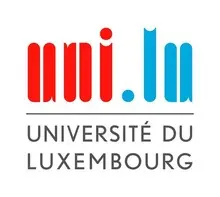
Economic Development & Sustainability
Sustainability May Be Bolstered By Income: Household Cooking Fuel Choice in a Developing Country
Read a summary using the INOMICS AI tool
The Sustainable Development Goals advocate ensuring universal access to clean and affordable energy by 2030, prompting a global push toward transitioning from unclean energy sources to cleaner alternatives. In response, Ghana has subsidized the cost of clean energy; however, the financial burden of this transition remains substantial for households. The role of household asset accumulation in facilitating this transition has been underexplored in existing literature; examples include Kafle and Dean (2015) and Ansong (2015). Utilizing logistic and instrumental variables (IV) regression methods along with data from the Ghana Living Standards Survey (round 6 & 7), I investigated how durable asset accumulation influences households' choice of cooking fuels in the research paper "The Nexus Between Household Durable Asset Accumulation And Household Cooking Fuel Choice in a Developing Country".
The analysis revealed that an increase in durable asset accumulation heightens the likelihood of households adopting cleaner cooking fuels. Therefore, I find that the Ghanaian government could incentivize the adoption of clean fuels, consequently mitigating environmental pollution, by implementing policies aimed at augmenting household income. More broadly, this means that economic development can have positive effects on sustainability, something that policymakers in other regions should take note of.
Introduction
The seventh Sustainable Development Goal aims to ensure access to clean and affordable energy by 2030. This goal is crucial because reliance on unclean energy sources like firewood, charcoal, and kerosene cause significant environmental and health issues, including air pollution, deforestation, soil degradation, and harmful emissions that contribute to climate change. These sources emit harmful gasses such as CO2, methane, and nitrogen oxides, which adversely impact human health. Studies by Younger et al. (2022) and Amegah et al. (2012) reveal detrimental health effects from exposure to these gasses, including reduced birth weight and increased neonatal mortality in low-income countries like Ghana).
In Ghana, the use of unclean energy stems from “energy poverty”, where households lack access to modern, clean and affordable energy sources. This forces them to resort to dirty and inefficient fuel sources. Factors contributing to this lack of access include low income levels, high prices of modern energy sources, and geographic location. Shockingly, energy poverty in Ghana is reported to be at a staggering 82.5% (Adusah-Poku and Takeuchi, 2019).
This study aims to ascertain the impact of durable asset accumulation on the selection of household cooking fuels in Ghana. It posits that durable assets afford households greater financial capacity and purchasing power, enabling them to meet various needs, including access to cleaner fuels. The analysis distinguishes between rural-urban households and households headed by males versus females.
The study acknowledges that the main obstacle hindering households from adopting clean fuels is their relatively higher cost. Consequently, households with elevated wages are more inclined to utilize clean fuels owing to their affordability. Moreover, the energy ladder hypothesis posits that as household wages rise, there is a corresponding transition towards cleaner fuel usage. In essence, lower-wage households tend to resort to dirty fuels, whereas those with higher incomes opt for clean fuels (Alem et al. 2016; Bofah, Appiah-Konadu, and Ngwu 2022). Thus, an upsurge in household wages is anticipated to increase the probability of households opting for clean fuels.
Methodology
Data
The investigation relies on microdata extracted from the Ghana Living Standards Survey (GLSS) conducted in 2013 and 2017 by the Ghana Statistical Service (GSS). The sample size comprises 25,569 observations. The study categorizes various fuel types into two groups: dirty and clean fuels. The primary metric for gauging asset accumulation adopts the approach advocated by Filmer and Pritchett (2001), akin to the methodology employed in formulating the wealth index within the Demographic and Health Surveys (DHS).
Empirical Model
The study regresses the fuel choice of households on the durable asset accumulation index, controlling for household characteristics such as wage, size, location, and poverty status. The logistic regression technique is employed, with average marginal estimates. An instrumental variable estimation (IV) addresses the potential endogeneity problem, using the two-year lag of theft incidents as an instrument.
To streamline the analysis, various fuel types were categorized into two groups: dirty and clean fuels. The dirty fuel category encompasses fossil fuel-derived sources such as firewood, charcoal, kerosene, sawdust, and crop and animal residue, while the clean fuel category comprises LPG and electricity. The study aims to discern how durable asset accumulation influences the probability of households opting for clean fuels, with a focus on facilitating the transition towards cleaner energy sources.
An asset accumulation index was constructed by amalgamating various forms of durable assets with potential monetary value. These encompass items such as televisions, radios, sewing machines, refrigerators, fans, computers, cars, plots of land, and more outlined in Sections 12.4 and 12.5 of the GLSS. To ensure the index's consistency and avoid negative values, standardization was applied, rendering the index to range between 0 and 1.
A model explaining the fuel choice of a household against factors that might influence this choice is given by:
E(Fuel choices | Asset accumulation, Age of household’s head, Gender of household’s head, Household size, Household wage income, Geographical location, Father’s education, Household poverty status, Marital status, Expenditure on electricity)
which leads to the following functional form:
𝑦 = 𝛽0 + 𝛽1asset_accumulation + 𝛽2age_head + 𝛿3female_head + ⋯ +𝜉i
where 𝑦 represents fuel choice, and all other factors mentioned are represented in the ellipsis.
Since the dependent variable is a dichotomous variable that lies between 1 and 0, that is, whether a household uses clean fuel or not, I use a logistic regression (Rodriguez, 2007). Supposing a linear model where the probability of 𝑦I is a linear function of its predictors, I estimate the log odds of energy fuel choice given by the following:
logit(𝑦i) = 𝛽pXi+ 𝜉I
As a result, the model assumes that the linear probability model is a function of natural log odds.
To address the potential endogeneity problem associated with asset accumulation, a two-year lag of theft incidents is used. I argue that suffering caused by a theft case two years ago is associated with the current value of total household assets, but not directly on fuel choice in the present. The two-year lag of theft incidents will influence fuel choice only through its influence on the current value of assets.
After fitting the model, the Pearson or Hosmer-Lemeshow goodness-of-fit test (gof) suggested that there is no significant difference between the observed and the expected values, indicating a good fit for the model.
Further, the Link test returns a p-value of 0.000 for the variable of prediction, indicating that the model is properly specified. The same test also returns a p-value of 0.486 for the variable of squared prediction, suggesting no evidence of model misspecification since it is insignificant. These results suggest that the model does not suffer from specification errors.
Results and Discussion
The analysis revealed that a one-unit increase in the asset accumulation index increases the household’s likelihood of adopting clean fuels by approximately 7.32 percentage points. Higher income levels enable households to afford cleaner and more efficient cooking fuels like LPG or electricity. This finding is statistically significant at the 5% level. To ensure robustness and accuracy of this result, a bootstrapping procedure with 1000 replications was conducted. The bootstrapped standard errors and confidence intervals further validated the consistency of the estimated coefficient, confirming the reliability of the conclusion.
Therefore, policies aimed at increasing household income and assets can incentivize the adoption of clean fuels, thereby mitigating environmental pollution and improving public health.
A good strategy for achieving clean energy usage in low-income countries should therefore include economic development aspects. These findings provide valuable insights for policymakers and stakeholders working towards achieving sustainable energy goals; sustainability can be more easily achieved when the households making energy decisions have a sufficient level of income.
The author is conducting more research into a related topic to deepen our understanding of the link between sustainability and other factors like education and inequality. First, with the upcoming paper “Female educational inequality and household cooking fuel choice: Evidence from the Ghana Demographic and Health Survey (2022)”, the author hopes to uncover whether better educational outcomes for women correlates with a higher likelihood of adopting cleaner cooking fuels. It is hypothesized that greater inequality in education would likely result in a continued reliance on traditional, unclean cooking fuels due to financial constraints.
The author is also working on another upcoming paper, “Educational inequality and Child Stunting: Evidence from the Multiple Indicator Cluster Survey (MICS, 2018) in Ghana”. The study will investigate how education equips parents with better knowledge and resources to provide adequate nutrition and healthcare for their children, potentially reducing the incidence of child stunting. By focusing on these dynamics, the study aims to highlight the critical role of education in improving child health and development outcomes.
References
Adusah-Poku, F., & Takeuchi, K. (2019). Energy poverty in Ghana: any progress so far? Renewable and Sustainable Energy Reviews, 112, 853-864.
Alem, Y., Beyene, A. D., Köhlin, G., & Mekonnen, A. (2016). Modeling household cooking fuel choice: A panel multinomial logit approach. Energy Economics, 59, 129-137.
Amegah, A. K., Jaakkola, J. J., Quansah, R., Norgbe, G. K., & Dzodzomenyo, M. (2012). Cooking fuel choices and garbage burning practices as determinants of birth weight: a cross-sectional study in Accra, Ghana. Environmental Health, 11, 1-10.
Ansong, E. (2015). The association between household consumer durable assets and maternal health-seeking behavior in Ghana. Women & Health, 55(5), 485-504.
Bofah, R. O., Appiah-Konadu, P., & Ngwu, F. N. (2022). Transition to cleaner cooking energy in Ghana. Clean Energy, 6(1), 193-201.
Filmer, D., & Pritchett, L. (2001). The effect of household wealth on educational attainment: evidence from 35 countries. Population and development review, 25(1), 85-120.
Kafle, K. R., & Dean, J. (2015). Effects of asset ownership on child health indicators and educational performance in Tanzania. Rodriguez, G. (2007). Logit Models for Binary Data (p. Chapter 3). Retrieved from http://data.princeton.edu/wws509/notes/
Younger, A., Alkon, A., Harknett, K., Louis, R. J., & Thompson, L. M. (2022). Adverse birth outcomes associated with household air pollution from unclean cooking fuels in low-and middle-income countries: a systematic review. Environmental research, 204, 112274.
Header image credit: Pixabay.
-
- Summer School
- Posted 3 days ago
Max Planck Summer School on the Political Economy of Conflict and Redistribution 2026
Starts 7 Sep at Max Planck Institute for Tax Law and Public Finance in Berlin, Germany
-
- Summer School
- Posted 3 days ago
BSE Summer School 2026: Economics, Finance, Data Science, and related fields
Starts 22 Jun at Barcelona School of Economics in Barcelona, Spain
-
- Postdoc Job
- Posted 1 week ago
2 Post-Doctoral Positions in Monetary Economics 100%
At University of Bern in Bern, Switzerland















